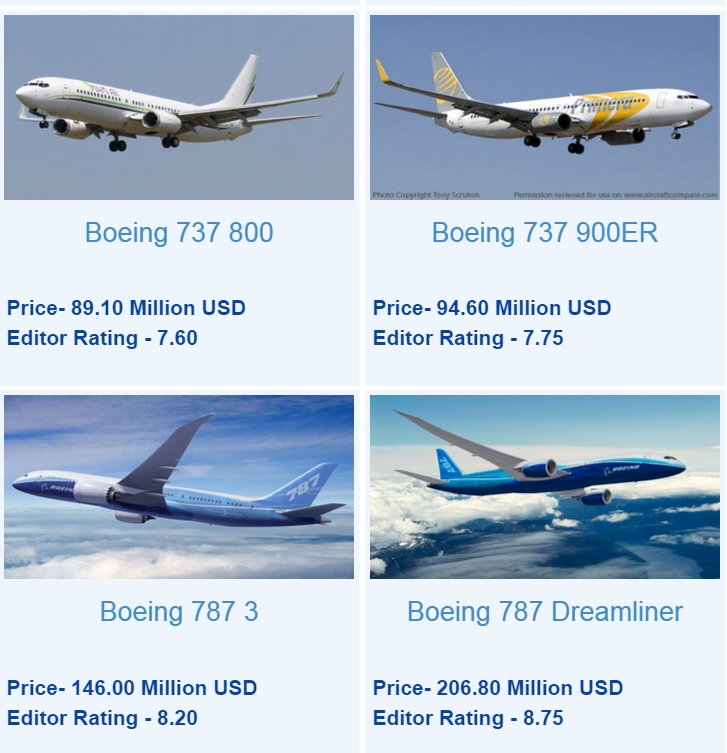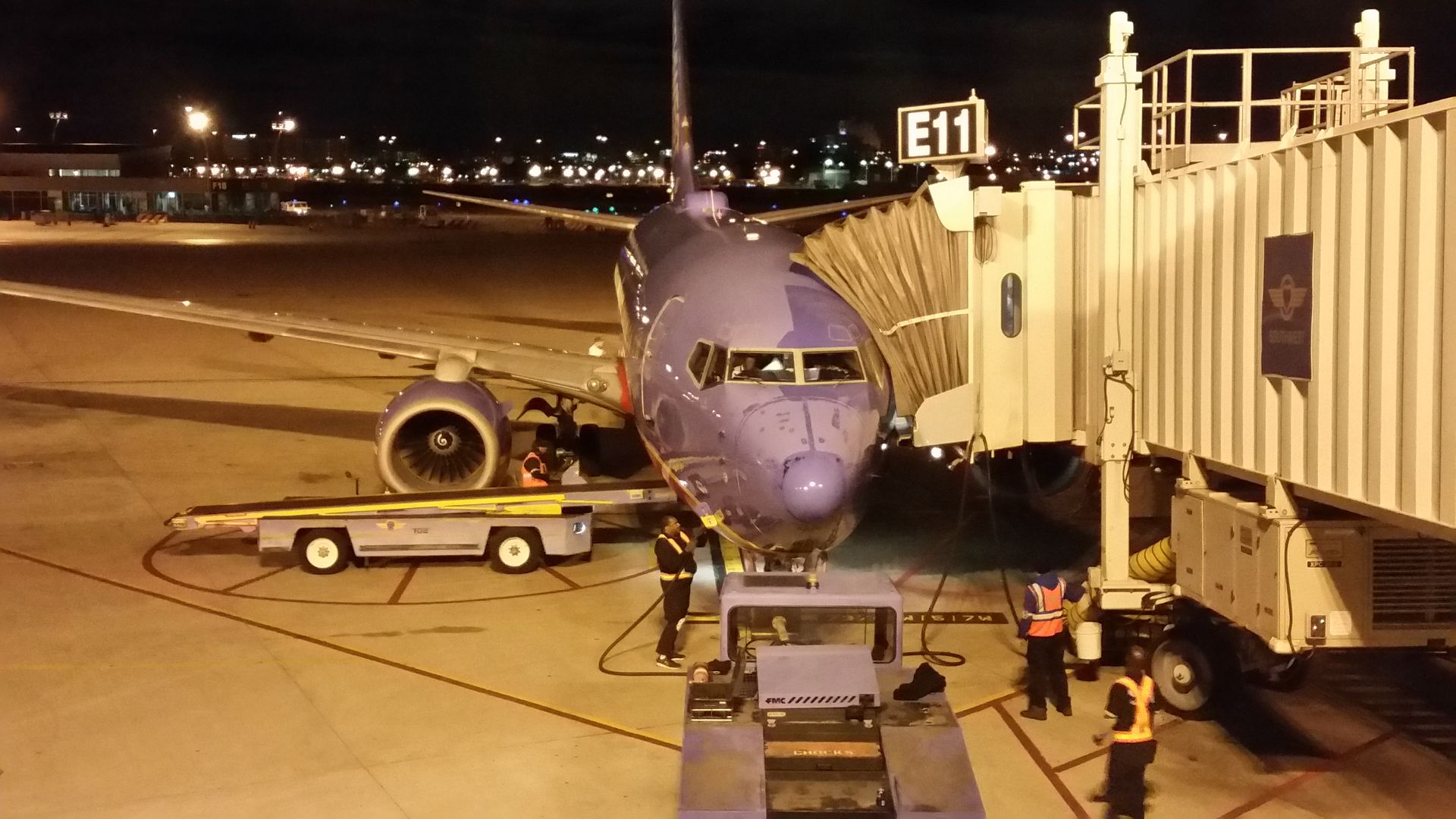Airlines are capital intensive businesses. They buy (or lease) very expensive planes. They purchase fuel, whose price has been volatile. On the whole in the U.S. they are heavily unionized.

At the same time, sales are volatile. Schedules, while adjustable, are published for most carriers about 11 months in advance but for the most part consumers don’t begin buying tickets until inside of 90 days from travel.
There’s a reason that Warren Buffet has famously quipped that the quickest way to become a millionaire quickly is to start with a billion dollars and invest in an airline, and also remarked “if a farsighted capitalist had been present at Kitty Hawk, he would have done his successors a huge favor by shooting Orville down.”
And yet we often think airlines are taking advantage of us, and cheer on government ‘going after’ airlines. Usually though we talk about government intervening to prevent or break up ‘monopoly’. Yet considering that airfares have been falling, it’s hard to argue that US airlines have meaningful pricing power.
In some hub cities customers will pay a (voluntary) premium for some non-stop trips, but in most markets consumers face several options. It’s strange that talk usually focuses on ‘3 legacy airlines’ (United/Delta/American) when Southwest is the largest domestic airline. What’s the theoretical basis for suggesting 4 large competitors (and other small competitors) are insufficient to yield competitive outcomes?

That said, there are limits on competition.
- Airlines are among the most heavily regulated sectors of the economy (“deregulation” really just meant that the federal government no longer dictates schedules and prices). Commercial airports in the US are owned by government (Branson, Missouri is private; the worldwide trend is private airports). Nearly all airport security is performed by the federal government (a few airports, like San Francisco, have government contractors). Flight routes are managed by government air traffic control. Pricing displays and consumer terms are dictated by the Department of Transportation. For better or worse, these are dimensions along which airlines really aren’t permitted to compete.

- Government limits access to key airports, for instance there’s fierce competition for access to gates at Dallas Love Field because federal law required the airport to eliminate a third of its gates [a complicated deal to more or less give Southwest Airlines a monopoly at the airport]. And government keeps out competition through limits on foreign ownership.

It seems funny to me that so much of the focus of aviation policy has been on anti-trust enforcement, when government itself limits competition. And now the acquisition of Virgin America by Alaska Airlines – which would make Alaska a viable competitor to the ‘big 4’ – is slowed down in negotiations with DOJ.
So while it should be obvious, a new paper (HT: Tyler Cowen) by the University of Chicago’s Dennis Carlton and several co-authors finds that the Delta-Northwest, United-Continental, and American-US Airways mergers haven’t been anti-competitive at all. In fact,
In our empirical analysis, we employ a difference-in-differences approach, which allows us to compare how the variables of interest changed between pre- and post-merger periods on routes where mergers were expected to have the strongest competitive effects (i.e., overlap routes) relative to other routes. This methodology has been used in previous legacy carrier merger investigations (see, e.g., Heyer, Shapiro and Wilder (2009)).
Our main conclusion is simple: The recent legacy carrier mergers have been associated with pro-competitive, not anti-competitive outcomes. In particular, we find that, on average across all three mergers combined, nonstop overlap routes (on which both merging parties were present pre-merger) experienced statistically significant output increases and statistically insignificant nominal fare decreases relative to non-overlap routes. This pattern also holds when we study each of the three mergers individually.
We find that nonstop overlap routes experienced statistically significant output and capacity increases following all three legacy airline mergers, with statistically significant nominal fare decreases following Delta/Northwest and American/US Airways mergers, and statistically insignificant nominal fare decreases following the United/Continental merger.
That I do not like these mergers doesn’t mean that they have been ‘bad’ in a traditional anti-trust sense.
They aren’t a conspiracy against consumers that the government is being bought off to allow.
Perhaps these mergers have made airlines strong enough to compete vigorously with each other, though in good times and with fewer desperate carriers they may not be competing as aggressively differentiating their frequent flyer programs.
Any criticisms of government anti-trust policy allowing airline mergers needs to, at least it seems, confront the data in this new paper. And if you want more competition in commercial aviation, you’re likely to find better levers removing legal barriers to it.


Oh big woof! So the way to increase competition is to eliminate competitors and increase market concentration. Hogwash.
These guys also have some prime land in Florida to sell.
Booth School of Business. Their papers will always reflect the interests of their sponsors.
Monopolies and cartels are always good, please ignore that Epi-Pen fiasco that is a random bad apple.
This research has been long in coming! Those who dissent were probably not even around when we had to deal with Northeast, Western, Eastern, Jet America, AirCal, Morris and so many other wanna be’s that just could not compete. We would not enjoy the plethora of convenient and marketing code international flights today (minus the Gulf States), without the execution of our airline industry dealing with reality to merge and combine into a common sense structure. Under the legacies, we now have a stronger Southwest, Jet Blue, and Alaska Air.
What opponents to this change must understand is how the public trough was relied upon for far too long to facilitate the building and maintenance of private airline infrastructure and safety systems. With CAB, all entries were needlessly protected. With Air De-regulation of 1978, anybody could enter the market, at the expense of the traveler. Now that the legacy carriers have experienced bankruptcy–at the expense of the taxpayer–we have witnessed their focus on profitability. From this, we have seen how premium economy and improved business class have evolved, at the expense of first class.
I too regret the loss of TWA 1011s with Chateaubriand carved in first class in 1973; yet, we have already witnessed when the government steps in to manage a market, as evidenced with Amtrak, and how we lost so many popular trains in 1971 just to eliminate perceived competition, and centralize reservations, commissaries, and maintenance. Ironically, the iconic Santa Fe Railway wanted no part of this dismantling, but could not pushback.
Easy to say competitive when oil is down, let’s see when oil is back up to 2006 prices and we’ll see how competitive it is
That is so funny: complaining about access to airports being “regulated”! Airports are the most subsidized pieces of land in the USA: I would like to see which airline would be able to afford the land that makes up LGA, LAX or the thousand of airports they have access to at below-market costs.
It seems to me that loyalty programs have become much less competitive, unless you view them as a race to the bottom.
A study based solely on pricing might come to the conclusion that the airlines have become more competitive. However, that ignores all other areas of competition that are less easily quantified. Quality of service, loyalty program value, seat spacing, probability of being seated next to an empty middle seat, probability of sitting in a middle seat, ability to reserve any available seat without a fee, and almost everything else is declining in a race to the bottom. By the way, did the study compensate the prices for the rather obvious value change in no more free checked luggage for most passengers?
Why would academics at the Univ of Chicago submit this work to a site like the one it is one if they could get it accepted to a scholarly refeered journal….which is about the only thing that counts for a professor/researcher/other academic at a university…especially one like the University of Chicago?
My guess is that they did so is because they couldn’t (or knew they couldn’t) get it accepted from a quality referred journal.
From the bottom of the cover page: “The authors have worked through Compass Lexecon as economic experts sometimes in opposition to and sometimes in support of previous airline mergers; they worked for the merging parties in each of the three mergers analyzed in this paper. … The authors are currently serving as experts for several airlines.” Research as dispassionate inquiry? Hardly seems the case here.
Tom, I am afraid you are correct. Academics like this are far too common in the social sciences now days. These quant studies, and the response “show me the data” are easy outs for academics who refuse to look at the politics that define so many of these issues, never mind the sponsorship that clouds their results.
I suspect that it’s just this type of fluff article that will serve as a something that airlines can reference to dispute claims that the airline mergers have been anti-competitive. It will be believed as something worthy by the general public and government officials eager to approve the mergers of their financial supporters.
@Tom, No one with a lick of common sense would find this study worthy of belief. Okay so maybe the general public and certain regulators and elected officials will. It don’t take no Econ. Ph. D. from U of Chi to see that the primary effect of the Big 3 airline mergers has been to make them instantly and sustainably mega profitable. It seems that large and growing gaps between price and cost is now a key indicator of an increasingly competitive industry.
Doesn’t pass the smell test
Thank you Tom and never mind.